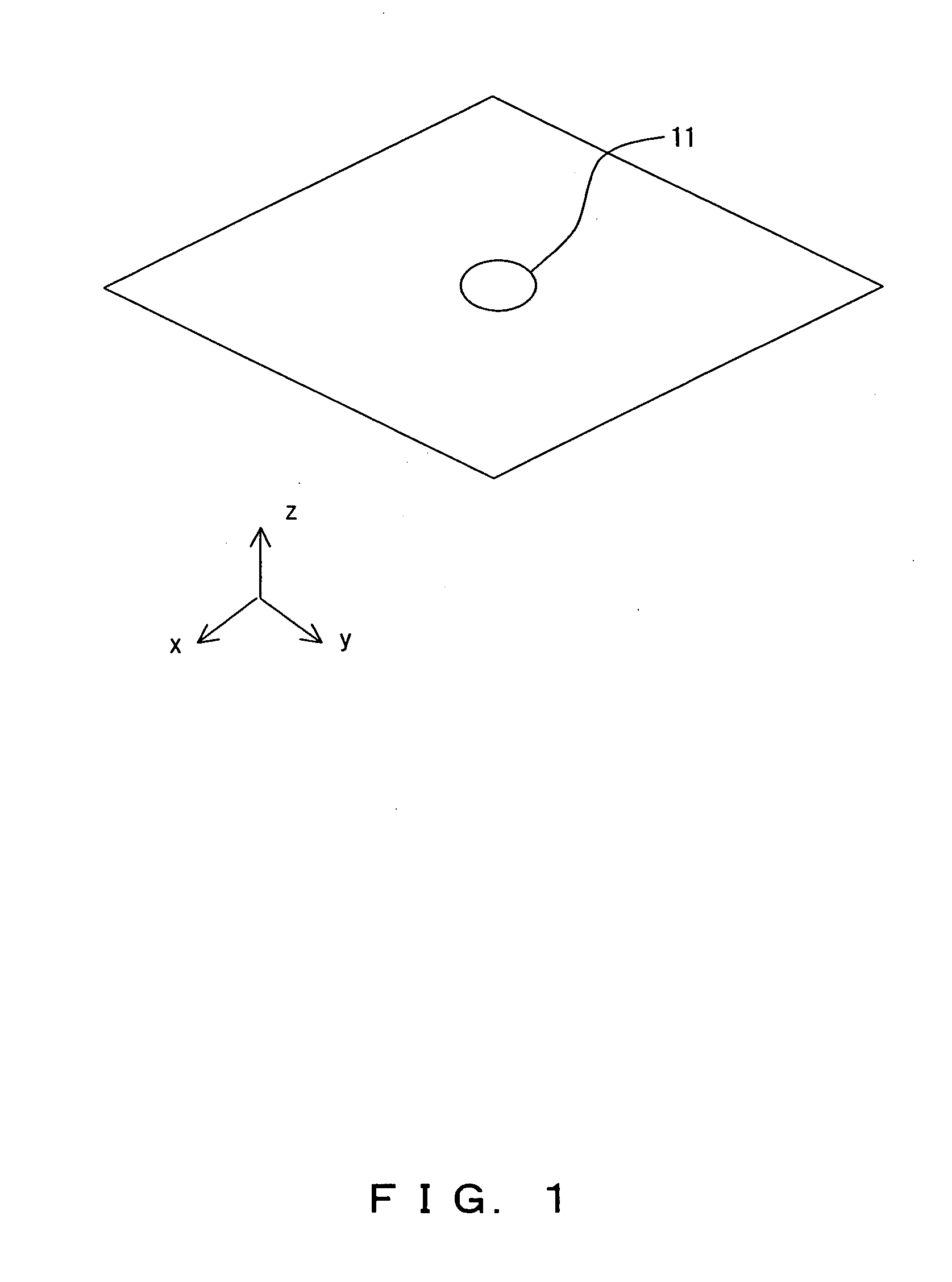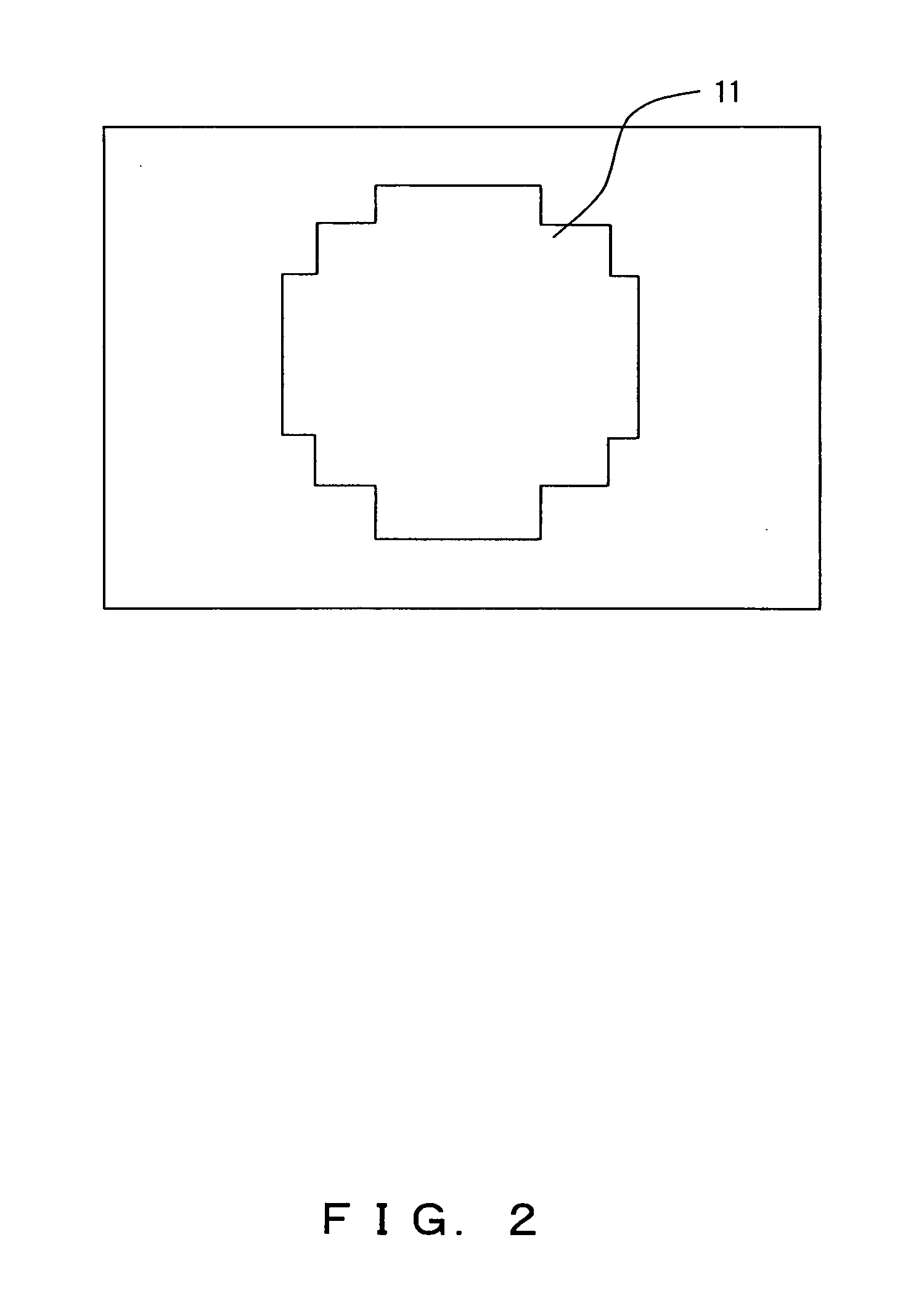Electric/magnetic field analysis method using finite difference time domain, material descriptive method in electric/magnetic analysis, electric/magnetic analysis device, analysis data generation device and storage medium
a technology of electric/magnetic field and time domain, which is applied in the direction of mechanical measurement arrangement, mechanical roughness/irregularity measurement, instruments, etc., can solve the problems of reducing the accuracy of analysis, the shape of the boundary degrades the analysis accuracy, and the calculation cost, etc., to achieve accurate analysis, simplify calculation methods, and accurate conduct
- Summary
- Abstract
- Description
- Claims
- Application Information
AI Technical Summary
Benefits of technology
Problems solved by technology
Method used
Image
Examples
Embodiment Construction
[0056] The preferred embodiments of the present invention are described in detail below with reference to the drawings.
[0057]FIGS. 3A through C and FIGS. 4A through C show the approximation methods of a boundary between materials in this preferred embodiment. FIGS. 3A through C show the approximation method in units of surfaces of a boundary between materials in the present invention. FIGS. 4A through C show the approximation method in units of cells of a boundary between materials in the present invention. Firstly, each approximation method, that is, the expression method of a material is described in detail with reference to FIGS. 3A-C and FIGS. 4A-C.
[0058] The centerline expressed in FIGS. 3A-C goes through the center of a surface constituting a cell and is parallel to one of the coordinate axes. Since a line parallel to one of the two coordinate axes can be disposed on the surface by the disposition way of a cell, there exit two parallel centerlines with different coordinate a...
PUM
 Login to View More
Login to View More Abstract
Description
Claims
Application Information
 Login to View More
Login to View More - R&D
- Intellectual Property
- Life Sciences
- Materials
- Tech Scout
- Unparalleled Data Quality
- Higher Quality Content
- 60% Fewer Hallucinations
Browse by: Latest US Patents, China's latest patents, Technical Efficacy Thesaurus, Application Domain, Technology Topic, Popular Technical Reports.
© 2025 PatSnap. All rights reserved.Legal|Privacy policy|Modern Slavery Act Transparency Statement|Sitemap|About US| Contact US: help@patsnap.com



